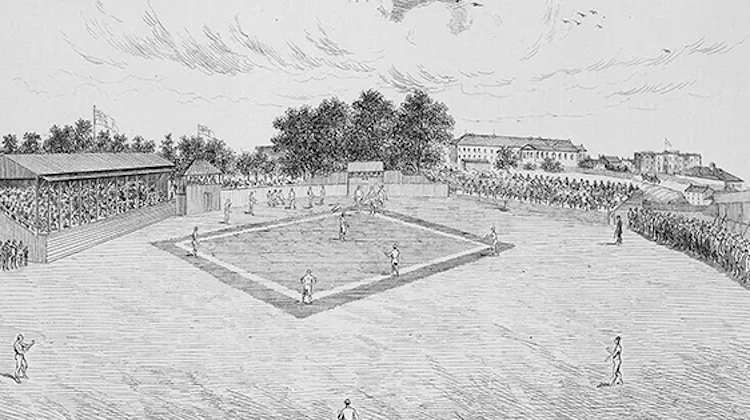
The 1877 baseball season continued the momentum started by the founding of the National League in the previous year.
The 1877 season was marked by its own share of excitement and controversy. The Boston Red Caps, managed by Harry Wright, won the National League pennant with a record of 42-18. This marked a significant achievement for Wright, who had previously managed the Cincinnati Red Stockings and the Boston Red Stockings, both successful teams in their own right.
However, the year was not without scandal. The Louisville Grays, who were contending for the league championship, suffered a late-season collapse, losing seven consecutive games. This led to an investigation that uncovered a conspiracy involving several of the team’s players. They were accused of intentionally losing games in exchange for money from gamblers. It was a serious blow to the integrity of the sport, and the accused players were promptly banned for life. This was one of the first major gambling scandals in professional baseball, predating even the infamous 1919 Black Sox Scandal.
During the 1877 season, some interesting changes were also taking place on the field. The rules continued to evolve, reflecting a gradual shift toward what we recognize as modern baseball. For instance, the number of balls required for a walk was reduced from nine to eight, although this was still considerably more than the current rule of four. Additionally, a new rule made it illegal for the batter to hit a pitched ball that bounced before reaching home plate, a practice that had been commonplace before.
In terms of individual achievements, 1877 was the year that saw the debut of future Hall of Famer Cap Anson with the Chicago White Stockings. Anson would go on to become one of the most influential players of his era, setting several records and leaving an indelible mark on the sport.
Overall, the 1877 season was a significant chapter in baseball’s early history. It marked a continuation of the professionalization and codification of the game, but it also exposed vulnerabilities that would challenge the integrity of the sport. The blend of triumph, innovation, and scandal that characterized this season provides a fascinating snapshot of baseball during a formative period in its development.
Pitchers
Jim Devlin
Tommy Bond
Starting lineup
Cap Anson
Deacon White
John Peters
Jim O’Rourke
John Clapp
Joe Gerhardt
Charley Jones
John Cassidy
Bench
Cal McVey
Joe Start